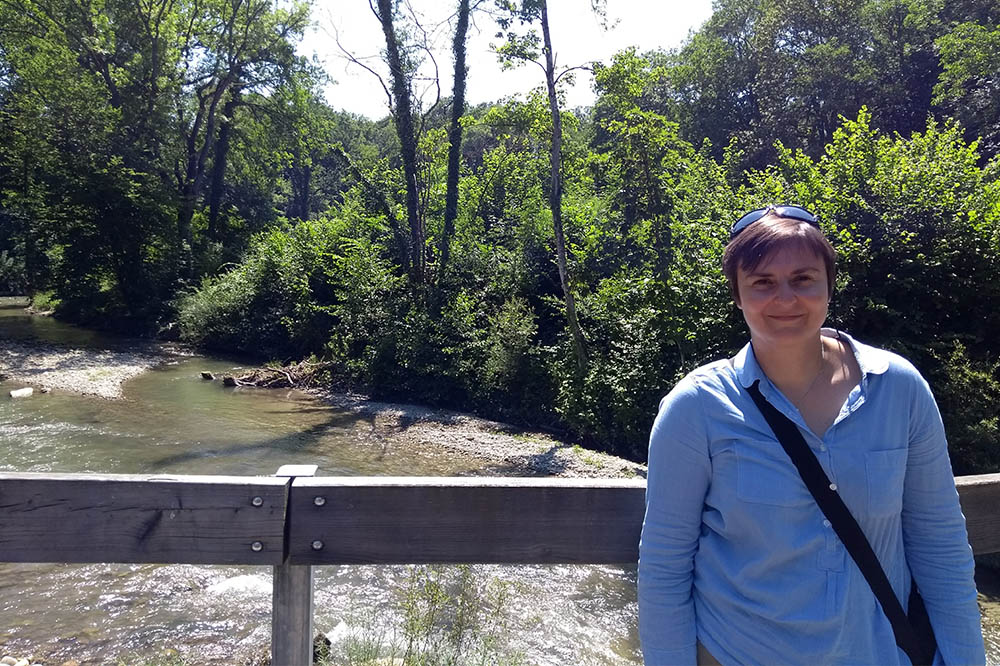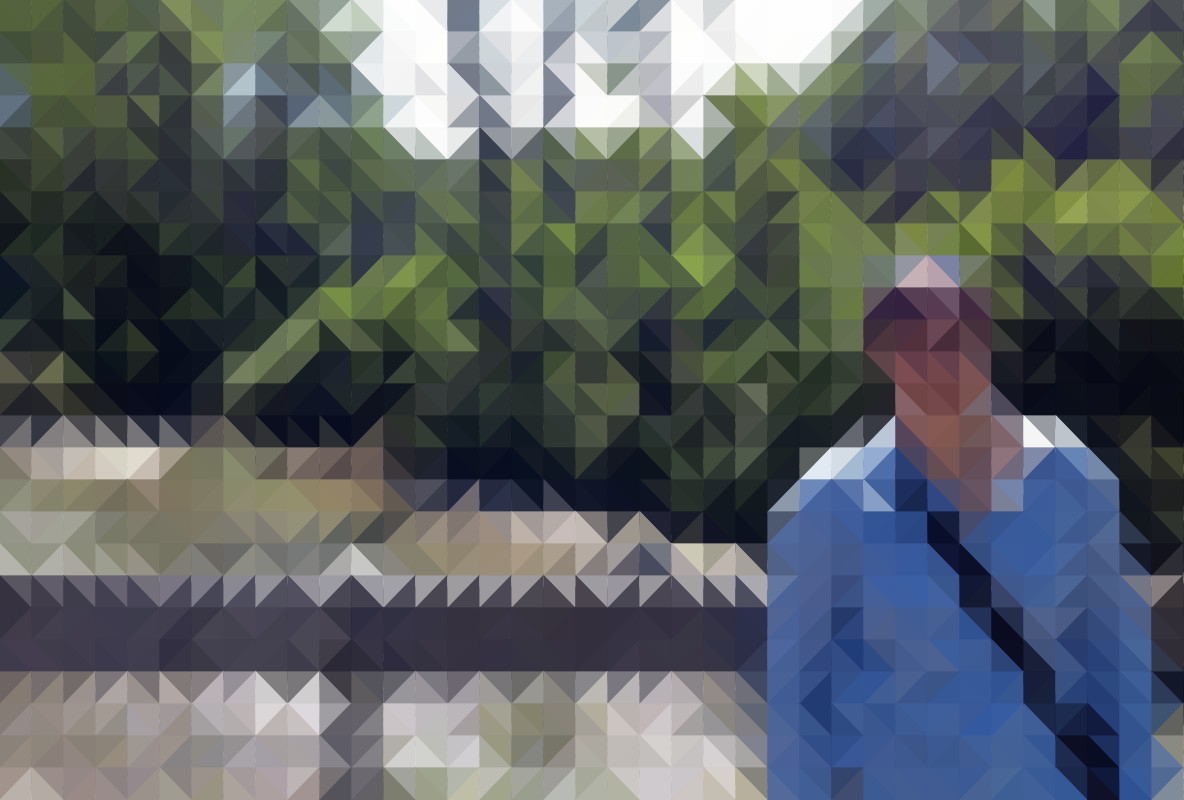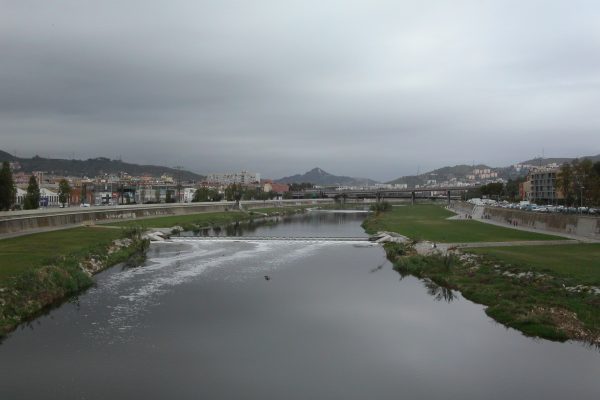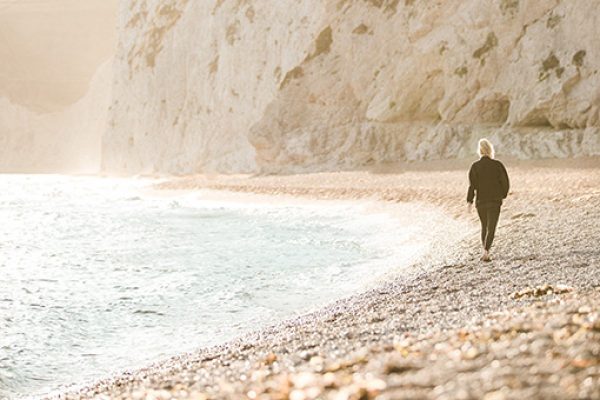Citizen science in Geneva
What can we learn from BlueHealth research in different countries? Cristina Vert shares her thoughts from a recent study placement in Geneva.
For the last two years, my work on BlueHealth has focused on our Besòs River project, where our team at ISGlobal has been evaluating the health and wellbeing impacts of changes to an urban river.
Yet in March, I was fortunate enough to spend 4 months at the Institute of Global Health in Geneva, Switzerland, where I learned about another initiative to improve a city waterway.
During my stay, I met with Sandrine Motamed, Senior Lecturer at the Institute of Global Health, and Director of the Geneva Association for Community Development – a non-profit organisation aiming to promote quality of life, wellbeing and health through community participation.
Sandrine took me to a site she has been studying in Versoix, an area of Geneva where a river flows right through the local neighbourhood.

Sandrine standing at the study site in Versoix
In 2015, an intervention was conducted on this river to improve its environmental quality, to help prevent flooding, and to create a pedestrian promenade along it. Since Versoix is divided by roads and a railway, a key objective of this work was also to use the river to connect different parts of the area.
Fairly straightforward so far, but what I found really exciting about Sandrine’s work was the way she and her team listened to the needs of the local community and shaped their intervention accordingly.
Citizen science played a key role in the study design, with the local community helping to assess the area and choose appropriate plans for development. In one example, volunteers surveyed the needs of people with reduced mobility to ensure wheelchair accessible areas were made available and any obstacles removed.

A fountain at the site in Versoix
Members of the community team now make regular visits to the area to identify sections of river that need to be maintained, and also to respond to the way people are using the regenerated spaces. Through this kind of approach they’ve been able to spot possible design flaws, such as the need for benches to be made higher to help older people sit down and stand up.
This process has also led to some wonderfully simple yet effective plans: free bags are provided for picking up dog poo; drinking fountains can be found at regular intervals; and – my favorite – shrubs have been planted with edible fruit so people can enjoy a healthy snack while they sit next to the river.
Although Sandrine and her team are still analysing the data, this kind of community-led approach has clear benefits not only in ensuring that local people believe in an intervention, but that it is tailored to fit their needs.
Whilst we must acknowledge socioeconomic and cultural differences between countries, I would love to see this kind of approach adopted here in Barcelona to help boost the benefits of our own blue spaces.
I am very grateful to Sandrine, her team and the Institute of Global Health for making my stay in Geneva productive and enjoyable. I hope to continue our interdisciplinary relationship when I’m back at ISGlobal.




